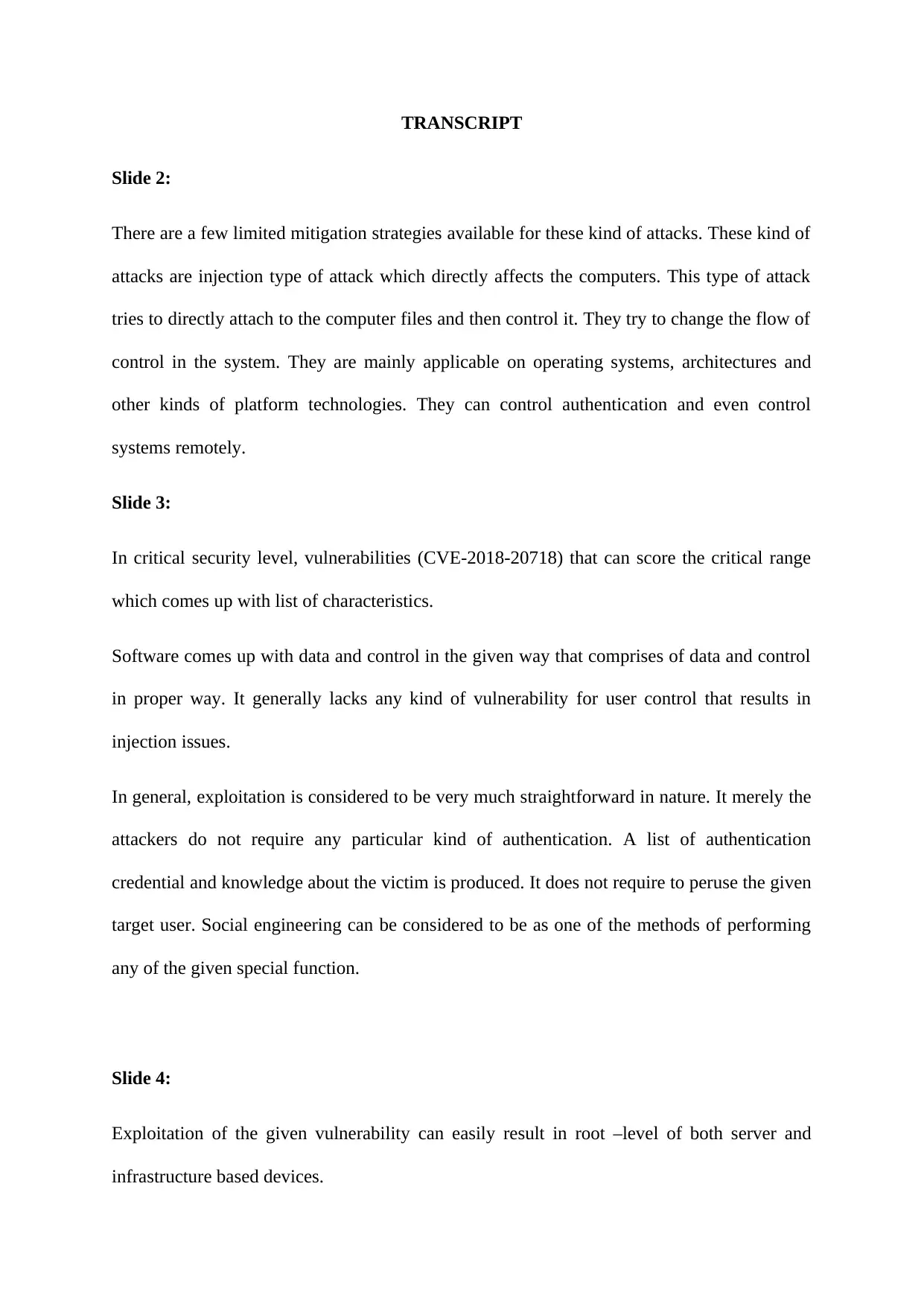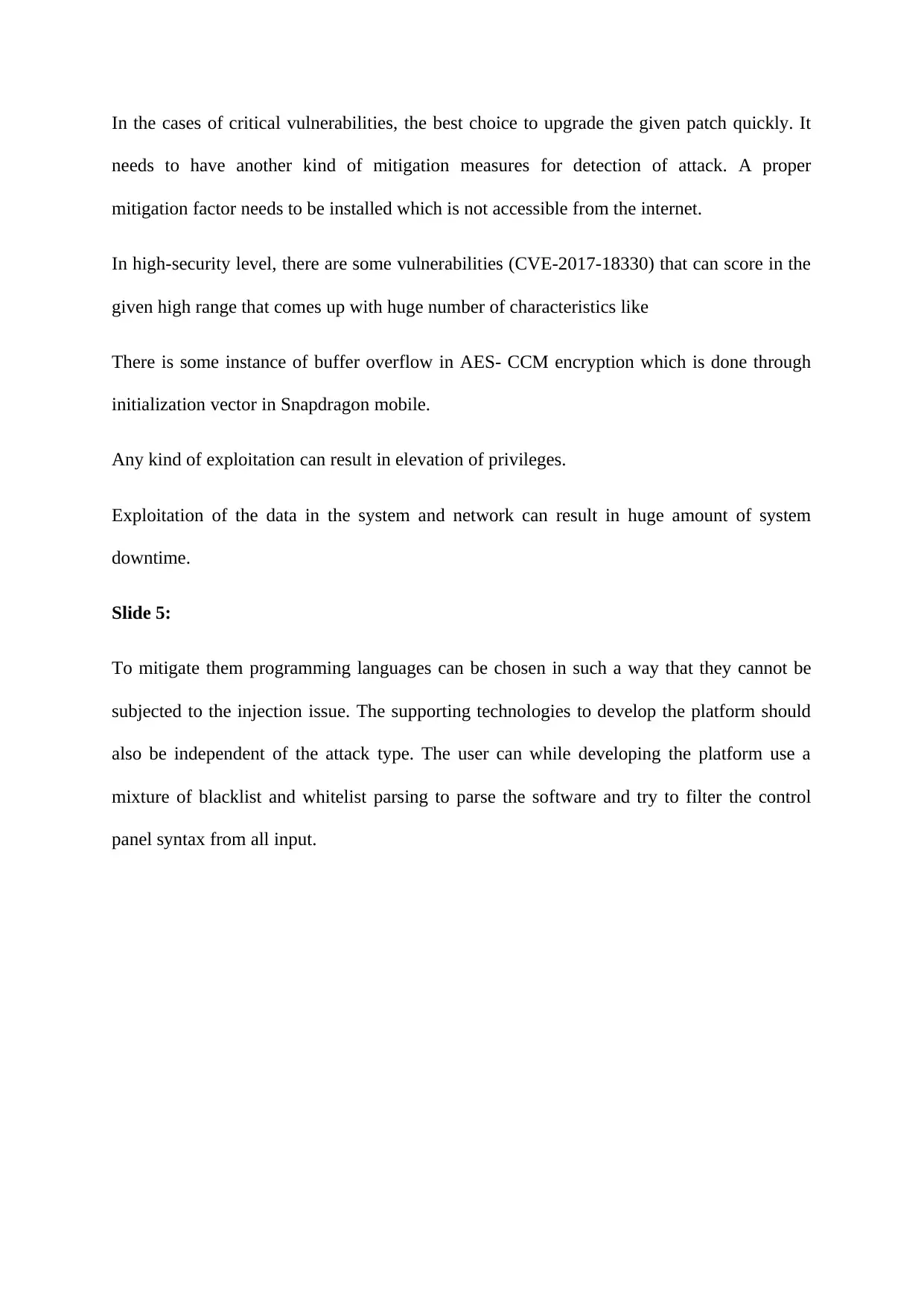Vulnerability Analysis and Mitigation Strategies for AI Systems
VerifiedAdded on 2023/01/16
|2
|443
|57
Report
AI Summary
This report analyzes vulnerabilities and mitigation strategies for AI systems. It focuses on injection-type attacks, particularly those affecting operating systems and architectures. The report highlights the criticality of vulnerabilities like CVE-2018-20718, emphasizing the potential for root-level access and the need for rapid patching. It also discusses high-level vulnerabilities, such as those related to buffer overflows in AES-CCM encryption (CVE-2017-18330), and their impact on system downtime. The report suggests mitigation techniques, including the use of secure programming languages, platform-independent technologies, and the implementation of blacklist and whitelist parsing to filter input and prevent attacks. This analysis provides valuable insights into securing AI systems and networks.
1 out of 2








![[object Object]](/_next/static/media/star-bottom.7253800d.svg)